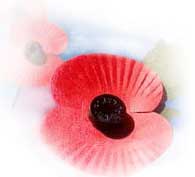

Meyers described these explosions as causing 'shell concussion', a concussion caused by the explosive force and 'mental shock', shock to the body and soul caused by exposure to an exploding shell. Meyers argued that soldiers suffering from 'mental shock' fell into one of three categories: hysteria, neurasthenia or mental disorder. Meyers also pointed out that soldiers did not actually have to be in proximity to an exploding shell in order to succumb to 'shell shock'. Soldiers acquired shell shock through constant exposure to war.
It was winter 1914-15 when the soldiers began to arrive at the field hospitals: some had no physical injuries but their senses (particularly sight, smell and taste) were badly affected. Some had unexplained paralysis, called 'somatoform dissociation' in medical terms, or were literally struck dumb. Others had 'the shakes' or suffered from amnesia. Some medical officers were unsympathetic towards the shell shocked soldiers and called them malingerers or described them as being in a 'funk'. Instead of proscribing treatment, they simply shipped the soldiers back into the battle zones. Even the Royal Army Medical Corps (RAMC) doctors (which included the neurologists, psychiatrists and so on) were charged with restoring the men's health and getting them back to the frontline as soon as possible. The average treatment period was two to four months and soldiers could be diagnosed as medically unfit (DMU), given Home Service (HS), which was usually a desk job, transferred to other hospitals or sent back to the battle fields. Until the end of 1916, the majority of shell shock cases were sent to England for treatment, then special centres were created in France to treat these patients and only the very worst cases were sent back to Britain. Craiglockhart was one of the six special hospitals for officers who suffered from 'shock'.